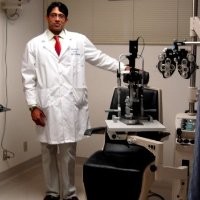The detrimental eye condition known as trachomatous trichiasis, where the eyelashes turn inward and scratch the eye’s surface, can be effectively managed by either of the two primary forms of eyelid surgery. This conclusion comes from a large, comprehensive study funded by the National Institutes of Health. Contradicting earlier, less extensive studies, this research reassures that either surgical technique can alleviate this condition. The study was published in PLOS Neglected Tropical Diseases and was supported by the National Eye Institute, an arm of NIH.
Trachomatous trichiasis is a globally prevalent condition, impacting approximately 1.7 million individuals, predominantly in impoverished and rural African regions. It’s a consequence of repeated or chronic eye infections with the bacteria Chlamydia trachomatis, transmitted through person-to-person contact. Trachoma is prevalent in hot, arid regions, and recurring infections can eventually lead to scarring and eyelid malformation. This malformation results in the eyelid’s edge turning inward, causing the eyelashes to scrape the eye. If not treated, trichiasis can lead to corneal clouding, eventually culminating in blindness.
The most prevalent and effective treatment for trichiasis is surgical correction of the eyelid’s inward turn, typically done in one of two ways. Earlier, smaller studies suggested one method, posterior lamellar tarsal rotation (PLTR), might be more effective. Consequently, some African programs began retraining surgeons in this technique. Meanwhile, an analysis of eyelids treated with the other surgery, bilamellar tarsal rotation (BLTR), implied that an incision slightly further from the eyelid’s edge could reduce recurrences. However, this change hadn’t been rigorously tested before now. This study directly compared these three surgical approaches while evaluating post-operative trichiasis risk.
The study, conducted in southern Ethiopia, involved 4,914 trichiasis patients. They were randomly assigned to receive BLTR with a 3 mm incision height, BLTR with a 5 mm incision height, or PLTR. The patients were revisited after six weeks and again between 12-18 months to assess post-operative trichiasis. Roughly 17% of the eyelids had post-operative trichiasis, with no difference in risk between the 3 mm incision methods. However, the 5 mm BLTR method had a significantly higher likelihood of post-operative trichiasis. Thus, this study suggests that the current standard surgeries, with a 3 mm incision, are superior treatment options compared to the 5 mm method.
Funding for this study was provided through the NEI grant UG1EY025992, and the clinical trial registration number is NCT03100747.


Comments are closed for this post.